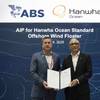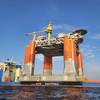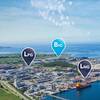Salvage & Wreck Removal Conference Presents an Upbeat Mood
The verdict at the 5th India Marine Salvage and Wreck Removal Conference of Hinode held this time in Mumbai last week was clear and unanimous. The presentations as well as the deliberations highlighted an upbeat atmosphere indicating the growing prospects for salvors on the India’s 7516 KM of coastline and in the surrounding area. The scenario depicts numerous options according to the presentations which brought out issues and insights that made prospects look bright in the coming months and with the monsoon round the corner, players could finally make it big.
The introductory session underlined the fact that India became a signatory to International Convention of Wreck Removal Convention in 2010 and the convention has been in force from 14th April 2014. However, Indian based major salvaging companies which are well equipped to handle every kind of situation are lacking despite the fact several accidents have taken place and are still happening. Some three years back there was the collision of MSC Chitra with MV Khalijia that led to the closure of country’s two major ports – Mumbai and Jawaharlal Nehru - for over a week. Few months later M. V Pavit drifted from Oman and grounded on the popular beach of Mumbai. MV Nordlake collided with the Indian Naval Ship (INS) Vindhyagiri in January. M.V. Rak Carrier sank near Mumbai port. There were cases of fire on number of ships, and several such incidents.
Capt Dinesh Gautama succinctly narrated the ‘Trials & Tribulations of a Ship Agent facing a Salvage/Wreck Removal Situation” and the barrage of laws and regulations that ship owners, salvors, and the insurance companies have to face. He mentioned a few cases where players had to take evasive action proving to be yet another instance of “the remedy being more painful than the injury”.
Touching up some of the accidents that have taken place Capt Zarir Irani spoke about “Facts v/s Assumptions” giving some down-to-earth advice. He stated categorical :
* Do not give out an opinion easily nor without being asked for (Stick to facts)
* Leave the conclusion out for lawyers to draft.
* Beware of the words “protect our member’s interest” as independent surveyors in your instruction letter
An important aspect viz “Measure of Indemnity in Hull Claims and Importance of Sum Insured” was dealt with by T Babu Paul, Chief Manager (Marine & Energy), National Insurance Company Ltd, He brought out various aspects that come into play when an accident takes place and the importance of insurance in such cases. He cautioned participants to take care on the various things that need to be insured under Hull Insurance; factors that determine the value of a vessel and recovery in case of a claim from Insurers.
The Indian Navy personnel and coast guards are well trained to undertake nuclear biological chemical damage protection measures, pollution response measures, etc according to Cmde Retd Ranjit B Rai, Ex VP Indian Maritime Foundation. He said, “ Navy and Coast Guards have both developed skills in underwater repairs, welding, riveting and how to avoid nuclear atomic fallouts and also seal a ship into a citadel and recycle air.” He informed that the Ministry of Defence and the Indian Navy has ordered two James Fisher International DSRVS FOR * 292 MILL.
Bas Wiebe of Resolve Marine Group gave in-depth account of some of their salvage operations handled in India and abroad. He highlighted the “out-of-the-box” thinking that helped to bring about success, the judicious use of equipment that plays an important part in achieving objectives and how they keep down cost of operations.
The issue of “How Cargo interests can be protected in the event a ship suffers a Casualty” was described in detail by Capt S M Divekar, a former Marine Hull Underwriter of New India Assurance and Oriental Insurance Company. He dwelt on the nitty gritty of claims and insurance and the loss, damage and expenses that arise in different circumstances.
“The correlation between bigger ships and complex operation in Salvage,” was explained by Hemant Phul, Operation Manager of SMIT, Singapore. He classified salvage being either Emergency Response Operations or Wreck Removal and showed the difference between the two and his reasons for putting them into two different heads. He cited various examples and cases to show how each one differs while ‘working out-of-the-box’ or ‘working within-the-box’. He said, “A salvor is always ready to tackle any challenge and ship size as he considers it to be just one of the many challenges…. “
Winding up the presentation Mehernosh Shroff, the CEO of Seaworthy Shipping Services spoke about the oil spill response. Claiming to have handled most of the major oil spills in or near India and having carried out cleaning up operations in the case of MSC Chitra collision, Mr Shroff gave an exhaustive list of problems and legal issues that he had to face when handling oil spill response. He mentioned that according to him the equipment required could vary tremendously depending on the job on hand. The surroundings and the environment must be factored in while deciding the choice of the equipment and material usage. There have been instances when a certain course of action would have resulted in prompt, simpler and easy way to achieve the objectives, he stated. But often there is a sense of suspicion or misunderstanding that often blots out rational thinking and proper decision making. Hence, it is best to let such decision makers take their own course and learn through experience.













